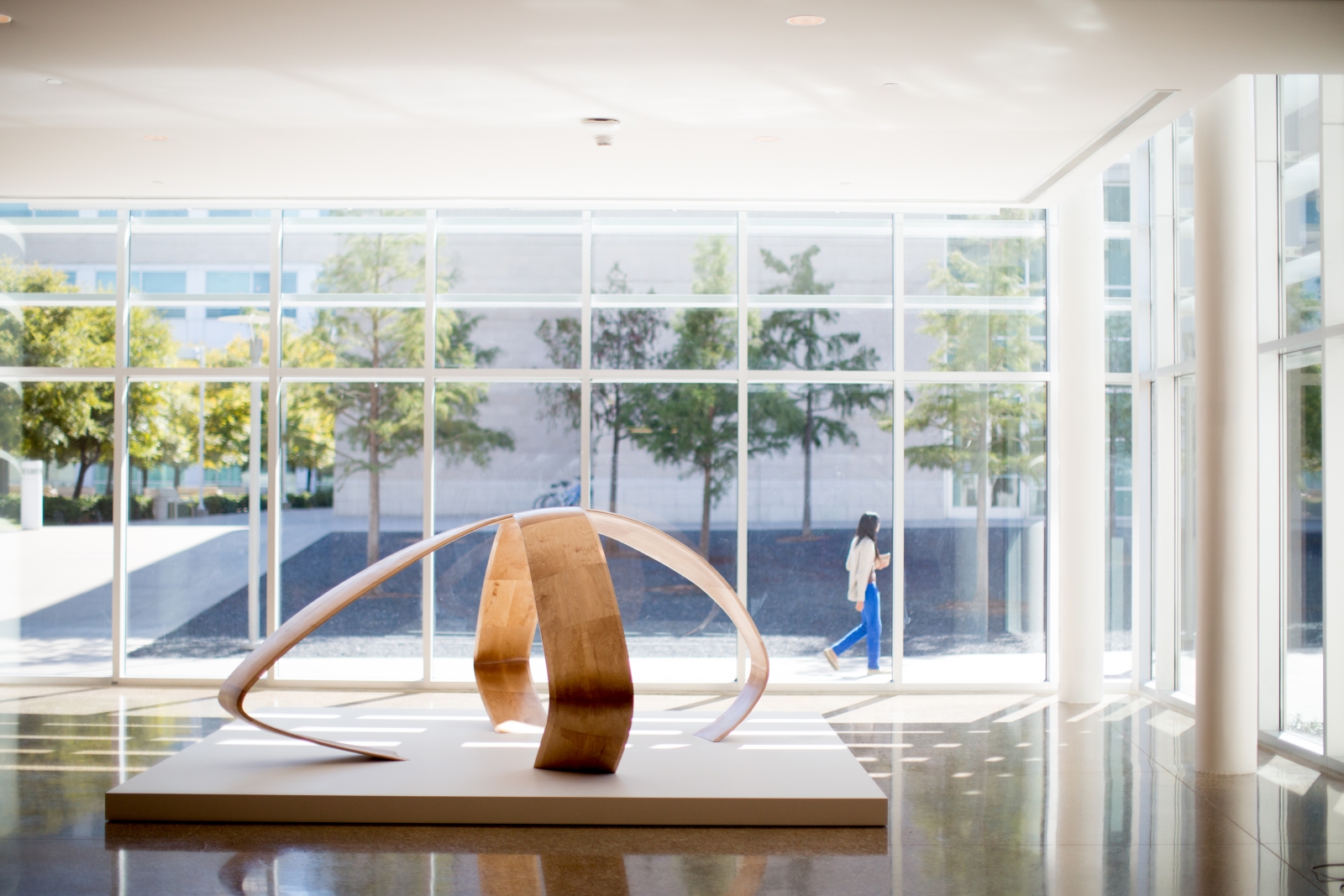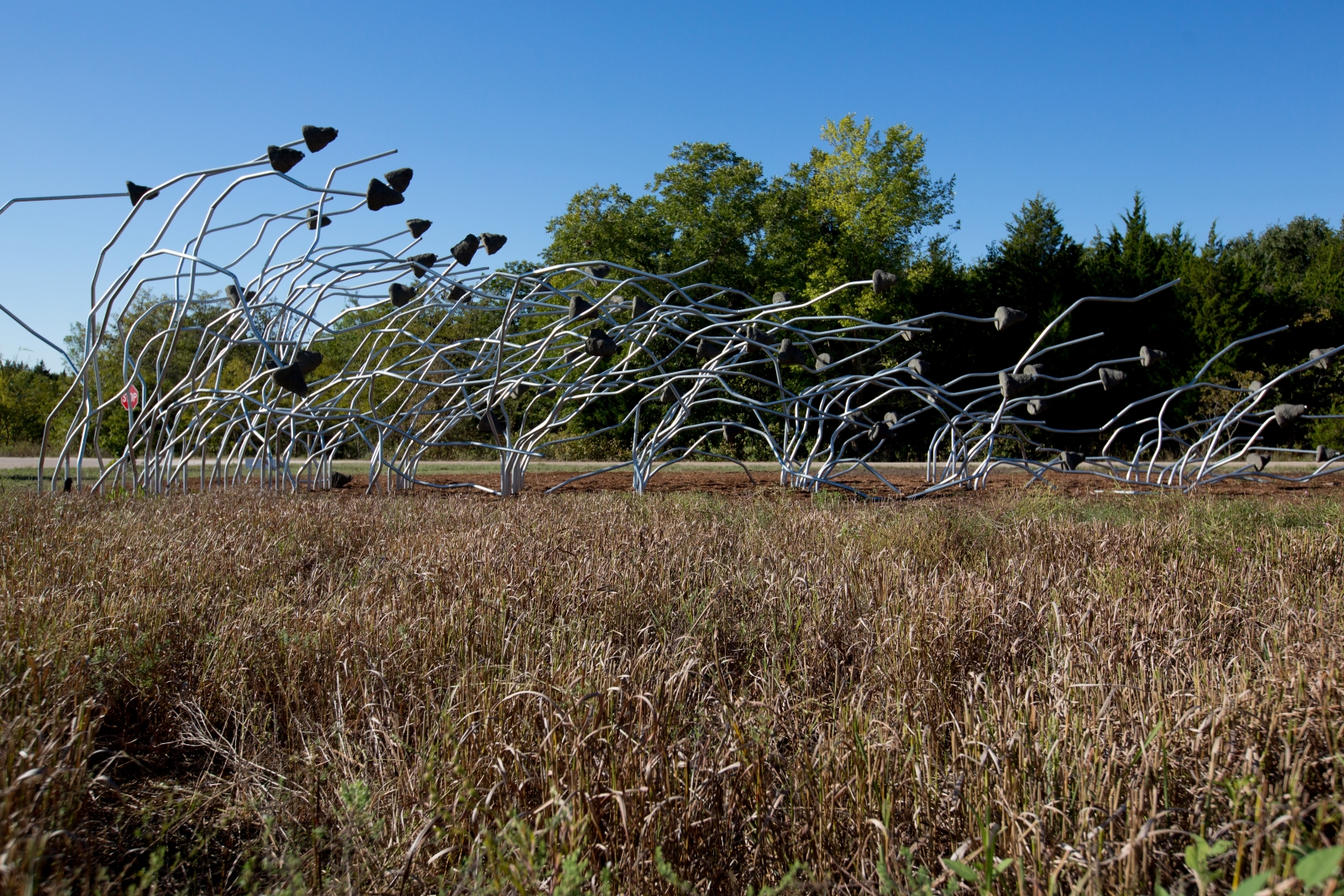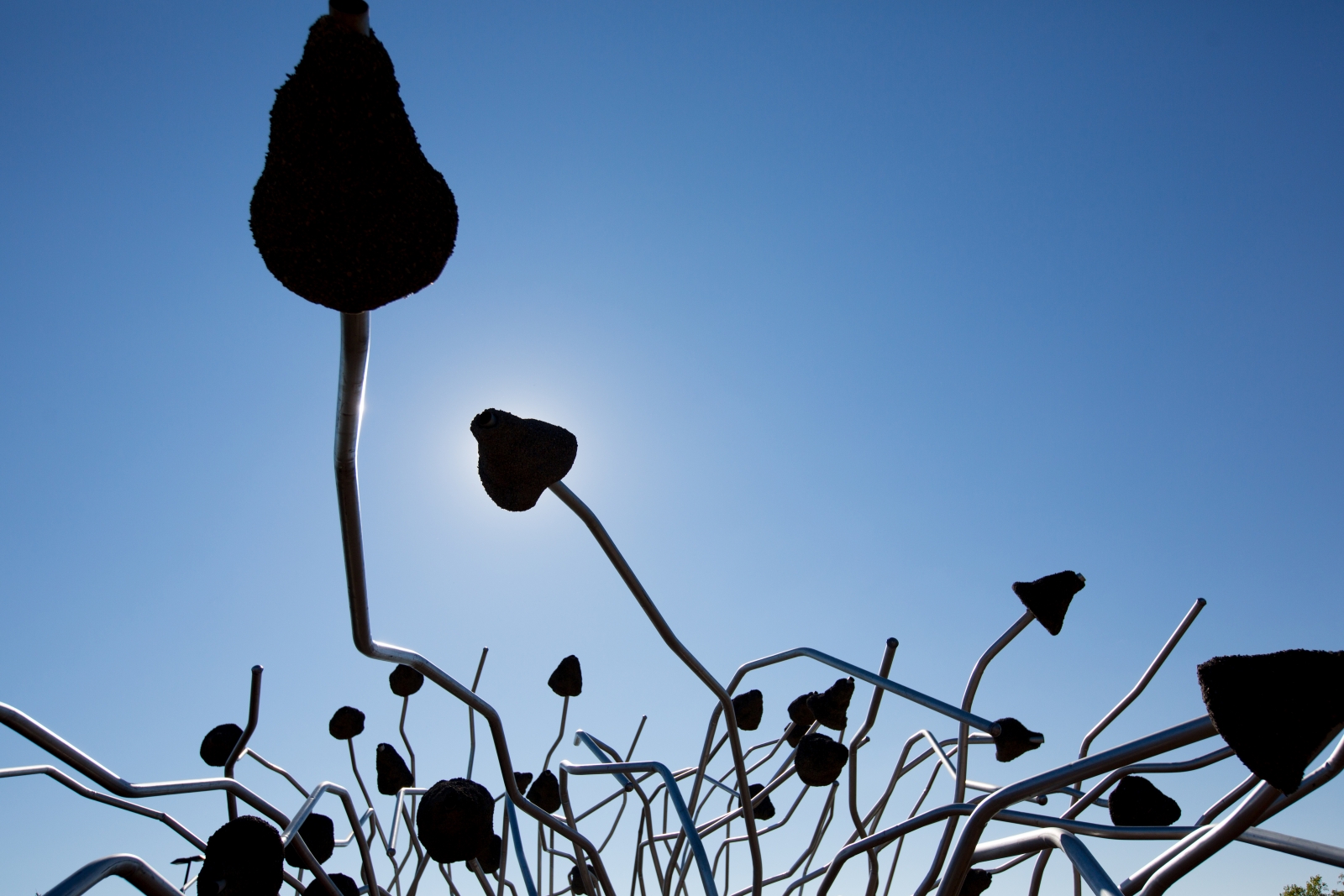
November 14, 2013
“Nasher Xchange” Is an Urban Art Expedition Through Dallas
Reimagining Dallas through public art

X sculpture
Courtesy Allison V Smith for the Nasher Sculpture Center
The Dallas Arts District is a tight cluster of architectural glamour, with a symphony hall by I.M. Pei, a theater by OMA and an opera house by Norman Foster, a science museum by Morphosis, and sculpture museum by Renzo Piano. To provide ballast to all this high-culture density, the Nasher Sculpture Center has mounted a wildly decentralized exhibition of public art to celebrate the museum’s 10th anniversary—and explore new possibilities for the city. Among the largest exhibitions of public art ever mounted, Nasher Xchange encompasses 10 newly commissioned works by 10 artists and/or collectives in 10 different sites spread throughout greater Dallas. To visit them all, you must undertake a compelling journey through a city that, amid red-hot regional growth, rapid demographic change and wide geographic sprawl, is still actively inventing itself.
In October, I did just that, visiting all ten works in a single day. Their wildly disparate sites include an urban fishpond, a demolition site in struggling neighborhood, a traditionally African-American college, and an upscale mall. The works themselves are equally distinct, ranging from Liz Larner’s X, a digitalized twist on High Modernist sculpture, to Rick Lowe’s community-based trans.lation. Lowe’s project brings together artists, community organizers, and residents of Vickery Meadow—a neighborhood populated largely by recent immigrants. Together, they mount pop-up craft markets that build a community of diverse artistic and cultural traditions where few cross-cultural connections had existed.
One work created for Nasher Xchange particularly fired my imagination: Ruben Ochoa’s Flock in Space. Ochoa, who lives and works in East Los Angeles, returns again and again to themes of urban life and social exclusion. Ironically, he selected the most remote site in Nasher Xchange—woodlands along the Trinity River that has been turned into an Audubon Society bird sanctuary. However, if you scratch the surface, you discover what attracted Ochoa: not long ago, this reclaimed land was a construction dumpsite.

Flock in Space
Courtesy Allison V Smith for the Nasher Sculpture Center

Flock in Space detail
Courtesy Allison V Smith for the Nasher Sculpture Center
In Ochoa’s Flock in Space, dozens of concrete “birds” are put suddenly to flight, their motion traced by intricately twisted steel poles. His work is a kind of resurrection of the urban materials that lied buried here, as well as a tribute to those who transformed this land into a haven for migrating birds. It is a lovely image, but when you look closer, you realize Ochoa ratchets up the metaphorical stakes even further. The materials he uses are in fact the makings of a chain-link fence. And so a structure designed to carve up urban spaces, and divides social classes, is changed into a trope of nature, of dynamism, of liberation.
While individual works in the exhibition achieve varying levels of success, the ambitious reach of the show itself becomes a kind of phantom eleventh work. Nasher Xchange not only knits together widely dispersed elements of the city, but also invites and challenges diverse public to participate. In the process, the exhibition provides more than insights into contemporary Dallas. It actively promotes creative possibilities for the future—a future every bit as compelling as all those Pritzker-approved beauties within the Arts District itself.





